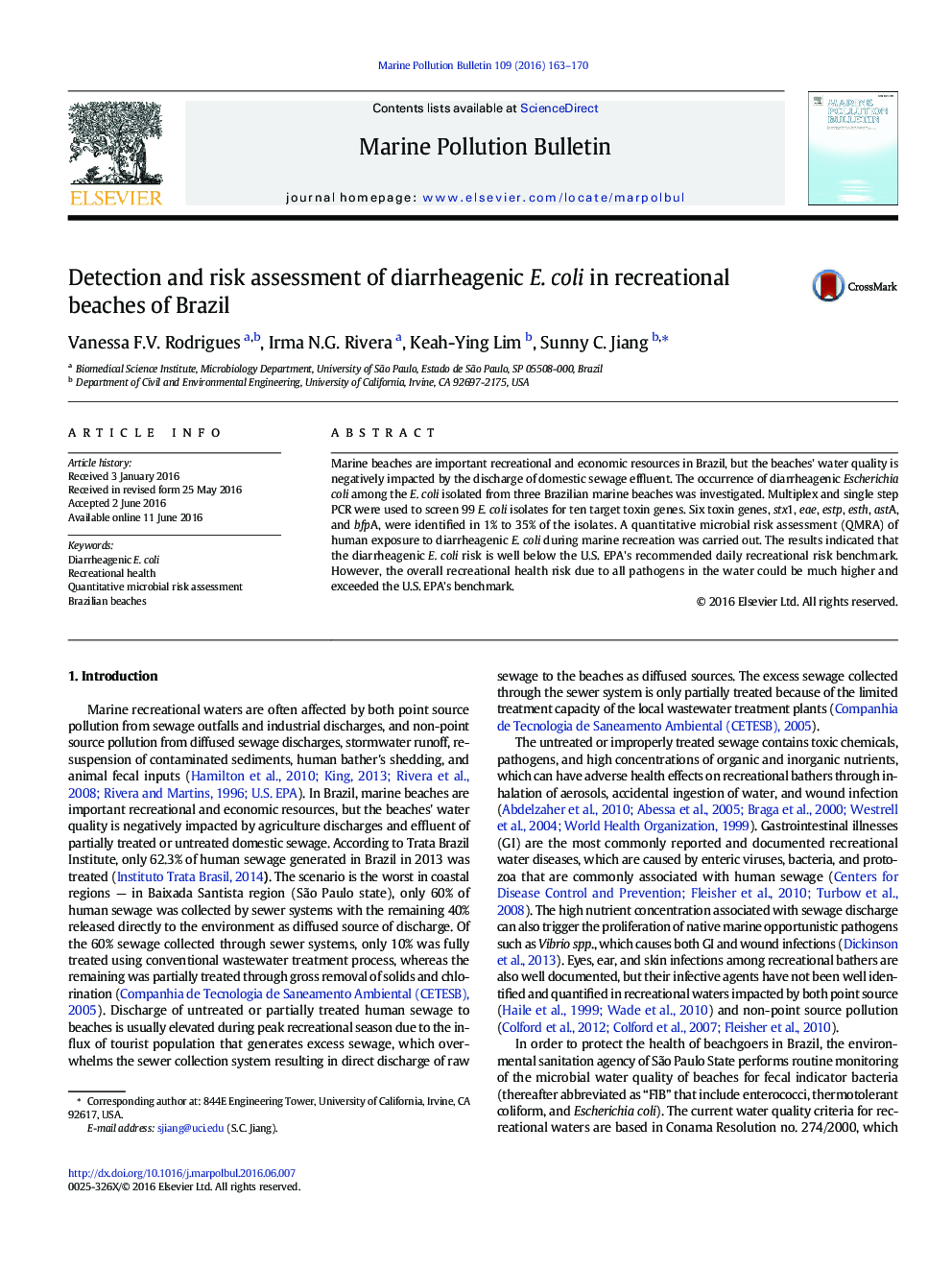| Article ID | Journal | Published Year | Pages | File Type |
|---|---|---|---|---|
| 4476388 | Marine Pollution Bulletin | 2016 | 8 Pages |
•Diarrheagenic E. coli were detected in offshore waters affected by sewage outfalls.•QMRA results indicated that E. coli alone does not pose significant health risks.•However, the risk of all pathogens in the water could be much higher.
Marine beaches are important recreational and economic resources in Brazil, but the beaches' water quality is negatively impacted by the discharge of domestic sewage effluent. The occurrence of diarrheagenic Escherichia coli among the E. coli isolated from three Brazilian marine beaches was investigated. Multiplex and single step PCR were used to screen 99 E. coli isolates for ten target toxin genes. Six toxin genes, stx1, eae, estp, esth, astA, and bfpA, were identified in 1% to 35% of the isolates. A quantitative microbial risk assessment (QMRA) of human exposure to diarrheagenic E. coli during marine recreation was carried out. The results indicated that the diarrheagenic E. coli risk is well below the U.S. EPA's recommended daily recreational risk benchmark. However, the overall recreational health risk due to all pathogens in the water could be much higher and exceeded the U.S. EPA's benchmark.
Graphical abstractFigure optionsDownload full-size imageDownload as PowerPoint slide
